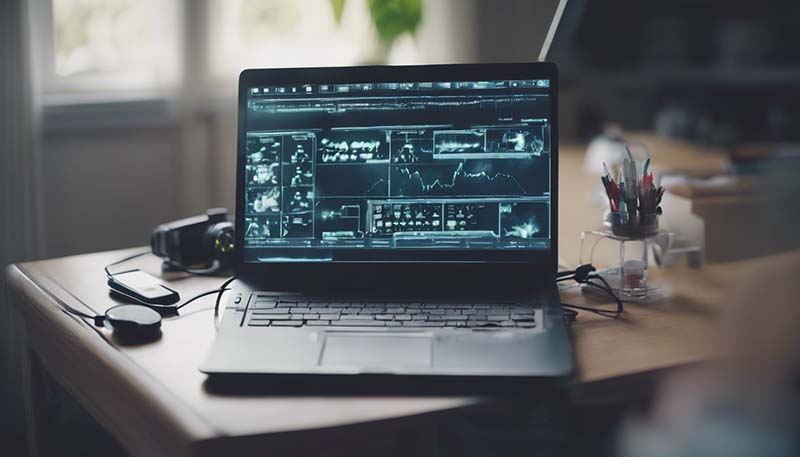The Intersection of Technology and Medicine: Telehealth and Remote Diagnostics
As we step into the future, the landscape of healthcare is evolving at an unprecedented pace. The intersection of technology and medicine has given birth to innovative solutions that are reshaping the way healthcare services are delivered. Two significant developments in this domain are telehealth and remote diagnostics, which are transforming patient care by making it more accessible, efficient, and cost-effective.
Introduction to Telehealth
Telehealth, also known as telemedicine, refers to the use of telecommunications and information technologies to provide clinical health care at a distance. It encompasses a range of services including remote consultations, patient monitoring, and health education.
Advertisement
Benefits of Telehealth
- Accessibility: Telehealth makes healthcare services available to patients in remote or underserved areas.
- Cost-Effectiveness: It reduces the need for travel and can lower overall healthcare costs.
- Time Efficiency: Patients can receive care without having to travel to a clinic or hospital, saving time.
- Continuity of Care: Telehealth allows for ongoing care and follow-ups without the barriers of distance.
Remote Diagnostics
Remote diagnostics is a branch of telemedicine that focuses on the use of technology to perform diagnostic tests outside of traditional clinical settings. It includes the use of medical devices that can transmit patient data to healthcare providers for analysis.
Types of Remote Diagnostics
- Wearable Devices: Devices like smartwatches and fitness trackers can monitor vital signs and activity levels.
- Remote Patient Monitoring (RPM): RPM systems allow healthcare providers to monitor a patient's health data from a distance.
- Teleradiology: Medical imaging can be done remotely and interpreted by radiologists who are not physically present.
- Mobile Health (mHealth): Smartphone apps can collect and transmit health data for analysis and intervention.
The Role of Technology in Telehealth and Remote Diagnostics
The effectiveness of telehealth and remote diagnostics is heavily reliant on the underlying technology. Here are some key technological components:
1. Communication Technologies
High-speed internet and mobile networks enable real-time communication between patients and healthcare providers. Video conferencing and secure messaging platforms are essential for consultations and sharing medical advice.
2. Data Security and Privacy
Ensuring the security and privacy of patient data is paramount. Encryption, secure data storage, and compliance with regulations like HIPAA are necessary to maintain trust and protect sensitive health information.
3. Cloud Computing
The cloud facilitates the storage and processing of large volumes of health data, enabling healthcare providers to access and analyze patient information from anywhere.
4. Artificial Intelligence and Machine Learning
AI and ML algorithms can analyze complex health data to identify patterns, predict health outcomes, and assist in making diagnostic decisions.

5. Internet of Medical Things (IoMT)
The IoMT refers to the interconnection of medical devices and applications via networks to facilitate the exchange of health data. It plays a crucial role in remote diagnostics by enabling the collection of real-time health metrics.
Challenges and Considerations
While telehealth and remote diagnostics offer numerous benefits, they also present challenges that need to be addressed:
- Regulatory Hurdles: There are legal and regulatory issues surrounding the practice of medicine across state lines and jurisdictions.
- Reimbursement Models: Payment models for telehealth services are still being developed and may vary by region and insurance provider.
- Patient Education: Patients need to be educated on how to use telehealth and remote diagnostic tools effectively.
- Technology Literacy: There is a digital divide where not all patients have access to or are comfortable with using the required technology.
Future Outlook
The future of telehealth and remote diagnostics looks promising. As technology continues to advance, we can expect:
- Improved Connectivity: The deployment of 5G networks will enhance the speed and reliability of remote healthcare services.
- Wider Adoption: As more healthcare providers and patients experience the benefits, telehealth and remote diagnostics will become more widely adopted.
- Integration with Electronic Health Records (EHR): Seamless integration with EHR systems will streamline patient data management.
- Advanced Diagnostic Tools: The development of more sophisticated and portable diagnostic devices will enhance the accuracy and scope of remote diagnostics.
Conclusion
Telehealth and remote diagnostics are transforming the healthcare landscape, making it more patient-centric and efficient. As technology continues to evolve, it is crucial for healthcare providers, policymakers, and patients to work together to harness these innovations while addressing the challenges they present. The future of healthcare is digital, and telehealth and remote diagnostics are at the forefront of this revolution.
Comment